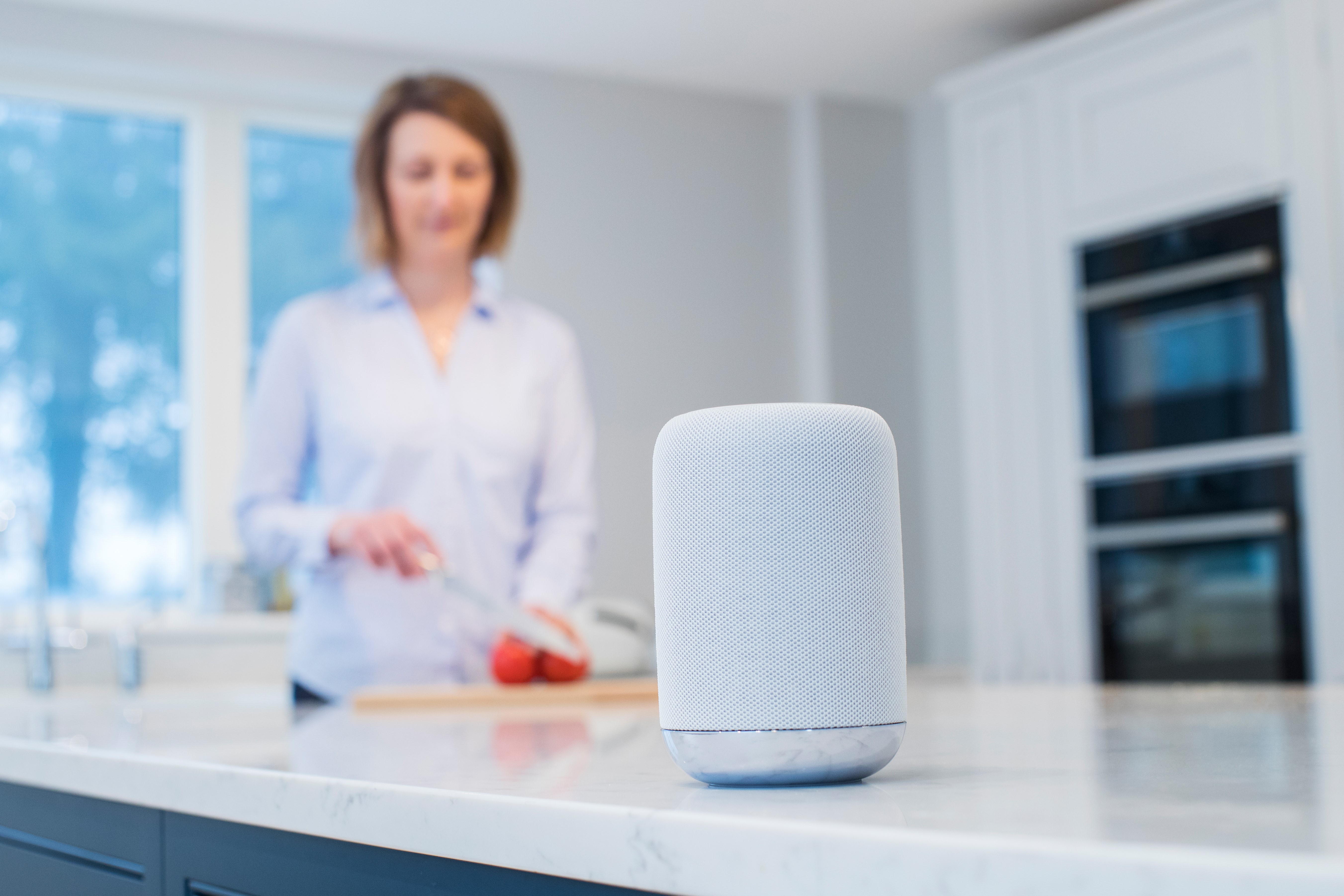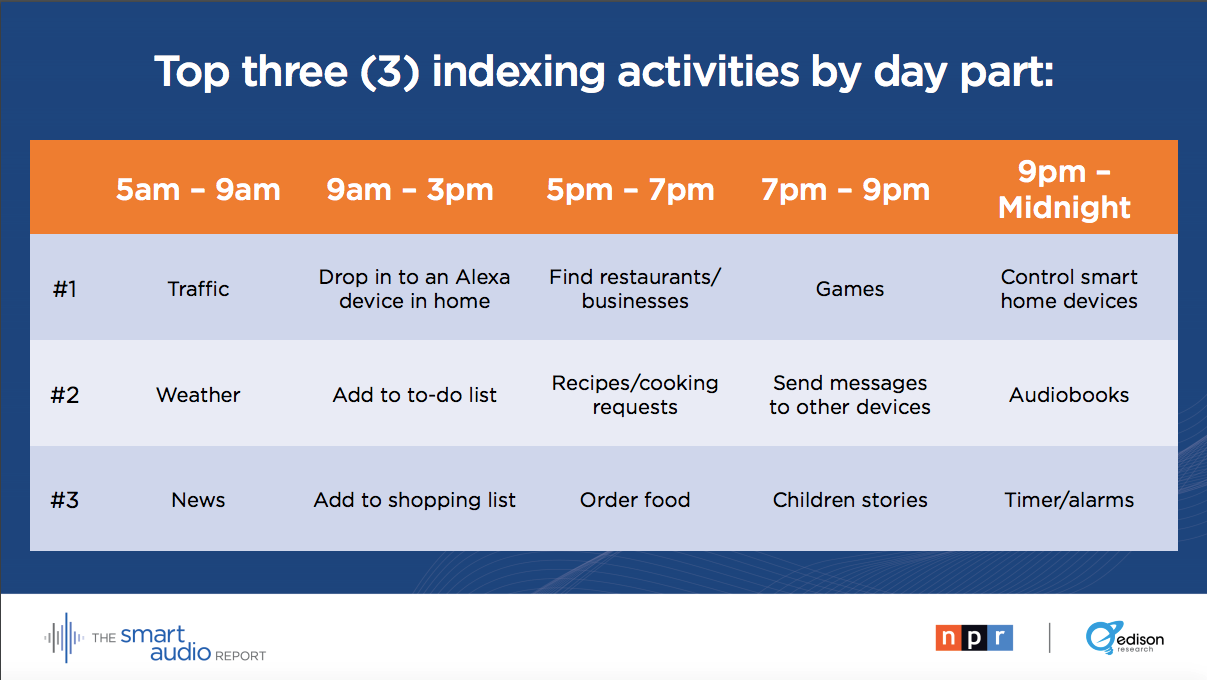Smart Audio Report: Our Growing Trust of Voice Assistants

It is more important than ever for brand marketers to understand the value of connecting with consumers via voice and audio programming. The spoken word audio renaissance is attracting avid listeners, radio has never been more accessible than it is today, and smart speakers are fueling more audio consumption. As a media organization built around audio and voice,NPRhas been an early agent in the smart speaker space – from native programming, providing the default news briefing for the top smart speaker products, to market research onopportunities for brands.
Last month, NPR and Edison Research released the latest findings fromThe Smart Audio Report, a recurring study on trends in smart speaker ownership and user behavior. Exponential uptake in the past year has been evident. After a surge this past holiday season – when 4% of U.S. adults reported they acquired their first smart speaker device -- ownership is up 128% since January 2017, to now one in six Americans (16%) having a smart speaker. This new survey data also reveals how voice activation in the home is fueling adoption of smart technology broadly and affecting how often consumers engage with other platforms throughout the day. Here, Edison Research Senior Vice President, Tom Webster, offers a deep dive on daypart trends in smart speaker use and how they indicate a growing trust of this technology that may soon give way to more substantial integration into daily life. -- Forward by Gina Garrubbo, President and CEO, National Public Media.
In the most recent look at how people use devices like Google Home and the various Amazon Alexa products across a typical day, we found the primary use case is exactly what you might expect -- to listen to audio programming in all its various forms including music, news, podcasts and other forms of spoken word audio. This is true throughout the day -- audio programming is consistently the most frequently-cited use for these devices. However, when we look deeper at some of the lower-ranking activities to see how they change relatively across the day, we see some incredibly fascinating patterns.
For this analysis, we looked at the indices (a measure of how much a given skill "outperforms" its average usage) of each activity across various dayparts. As an example, if "setting a timer" is used by 5% of users across an average day but is used by 10% of users between 9 p.m. and 12 a.m., we would say that "setting a timer" is 200% of its average usage between 9-12, or an index of 200. The following chart shows the top indexing activities by each day part -- in short, which skills punch above their typical weight in specific parts of the day. This chart tells an incredible tale of utility.

Note: Indices are a separate measure from overall activities, which are typically led by audio consumption.
These indices give us a glimpse into a fascinating story of contextual relevance for the smart speaker category.
- In the early morning, we see a lot of "information service" usage -- traffic, news and weather. People are getting ready to start their days and are quickly obtaining utilitarian information for their commute, as well as flash briefings and other efficient means to update themselves on the top stories of the day. In that context, it is easy to see why 30% of smart speaker owners say that the time they spend with their smart audio devices is replacing time they used to spend with TV. Many Americans are in the habit of turning on the TV to various morning shows to catch up on essential information and the top stories of the day, but with smart speakers that information is readily available immediately upon waking, on demand, without the friction (however small) of turning on the TV to the appropriate channel.
- During the work day, from 9 a.m.-3 p.m., these devices truly over-index as "assistants." We see increased usage of the various list and note-taking skills for busy Americans.
- Once the workday has ended, smart speaker owners begin to think with their stomachs -- looking for restaurants and recipes and ordering food all index extremely highly compared to the rest of the day.
- During prime time, we see entertainment options come to the fore, with reading stories and playing games all showing at much higher levels than they do during the rest of the day.
- At bedtime, the use case for smart speakers becomes very clear: Commands including turning off lights, setting an alarm and listening to audiobooks over index during this time.
What is fascinating about smart speakers is that none of the activities listed above is particularly novel. Setting timers, looking up recipes and listening to the news are all things we have been doing for years. But that reality is the very heart of the smart speaker value proposition: These devices don't ask us to do something new. Rather, they enable us to do so many prosaic, basic things that we already do -- but with less friction.
This incredible utility with even the most mundane tasks is why two-thirds of smart speaker owners say that they wouldn't want to go back to life before they owned their devices. It's not any one, big functionality. It's a host of little things. One tiny task at a time, smart speakers have become part of the fabric of everyday life -- not a gadget, but an indispensable assistant for the many, "boring" tasks of our lives. In assuming those tasks, smart speakers have taken a fairly remarkable step in the history of personal computing -- they have earned at least a small bit of trust in the everyday lives of their owners.
In other words, people may have originally purchased these devices for the "cool" things they could do, including playing music from a simple voice command. But what keeps them in constant use in the households of 39 million Americans is the boring things they can do -- tea timers, weather forecasts and even telling the time.
As we continue to rely on these devices for the prosaic tasks, we become more accustomed to having them in our everyday lives and, perhaps, to trusting them with more important aspects of our lives -- moving from entertaining us to managing our finances and potentially even our health.
By effortlessly managing the mundane aspects of our life, these smart home assistants will gradually earn our trust to handle more and more of the minutia of our day. That utility -- however "boring" it may seem -- is the secret sauce to increased adoption of voice assistants in our everyday lives.
The Smart Audio Report from NPR and Edison Research, which debuted as an industryresource in June 2017, is a reoccurring study on trends in smart speaker ownership and user behavior. A full archive of research from the Report is available at NPR.org/smartaudio.
Click the social buttons above or below to share this story with your friends and colleagues.
The opinions and points of view expressed in this content are exclusively the views of the author and/or subject(s) and do not necessarily represent the views of MediaVillage.com/MyersBizNet, Inc. management or associated writers.


